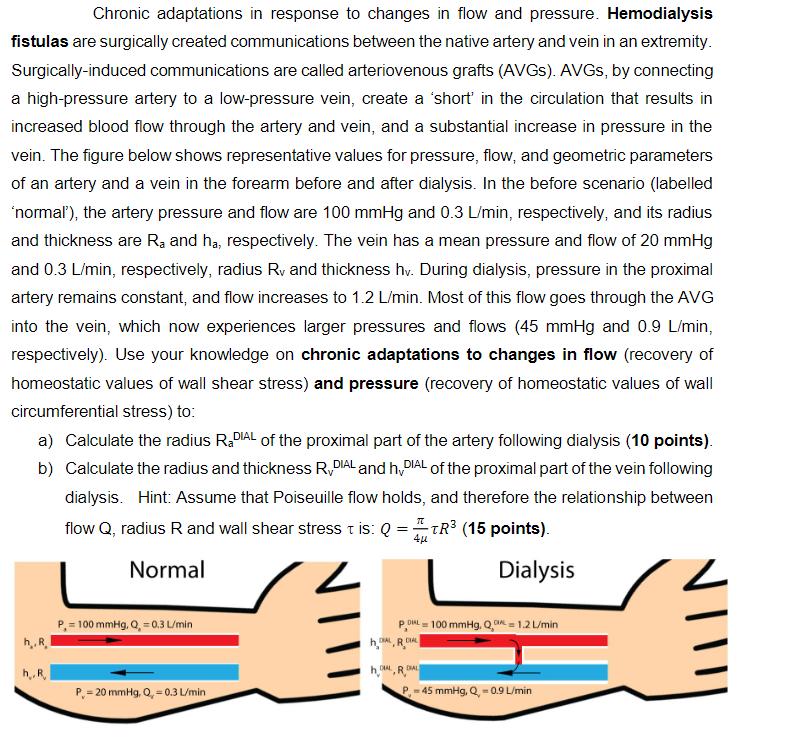Answered step by step
Verified Expert Solution
Question
1 Approved Answer
Chronic adaptations in response to changes in flow and pressure. Hemodialysis fistulas are surgically created communications between the native artery and vein in an

Chronic adaptations in response to changes in flow and pressure. Hemodialysis fistulas are surgically created communications between the native artery and vein in an extremity. Surgically-induced communications are called arteriovenous grafts (AVGS). AVGS, by connecting a high-pressure artery to a low-pressure vein, create a 'short in the circulation that results in increased blood flow through the artery and vein, and a substantial increase in pressure in the vein. The figure below shows representative values for pressure, flow, and geometric parameters of an artery and a vein in the forearm before and after dialysis. In the before scenario (labelled 'normal'), the artery pressure and flow are 100 mmHg and 0.3 L/min, respectively, and its radius and thickness are Ra and ha, respectively. The vein has a mean pressure and flow of 20 mmHg and 0.3 L/min, respectively, radius Rv and thickness hv. During dialysis, pressure in the proximal artery remains constant, and flow increases to 1.2 L/min. Most of this flow goes through the AVG into the vein, which now experiences larger pressures and flows (45 mmHg and 0.9 L/min, respectively). Use your knowledge on chronic adaptations to changes in flow (recovery of homeostatic values of wall shear stress) and pressure (recovery of homeostatic values of wall circumferential stress) to: a) Calculate the radius R.DIAL of the proximal part of the artery following dialysis (10 points). b) Calculate the radius and thickness R,DIAL and h,DIAL of the proximal part of the vein following dialysis. Hint: Assume that Poiseuille flow holds, and therefore the relationship between flow Q, radius R and wall shear stress t is: Q = TR3 (15 points). 4 Normal Dialysis P, = 100 mmHg, Q, = 0.3 L/min P,oML = 100 mmHg. Q,On = 1.2 L/min DIAL R. h AL R DIA h, R, hR DAL P = 20 mmHg, Q, = 0.3 L/min P, - 45 mmHg, Q, = 0.9 L/min %3D
Step by Step Solution
★★★★★
3.41 Rating (154 Votes )
There are 3 Steps involved in it
Step: 1
Amuwa fa pioblem 24 Guven Axtey prunuwe 100 mm Flow ...
Get Instant Access to Expert-Tailored Solutions
See step-by-step solutions with expert insights and AI powered tools for academic success
Step: 2

Step: 3

Ace Your Homework with AI
Get the answers you need in no time with our AI-driven, step-by-step assistance
Get Started


